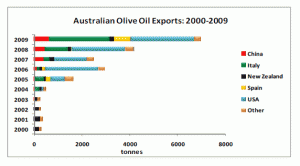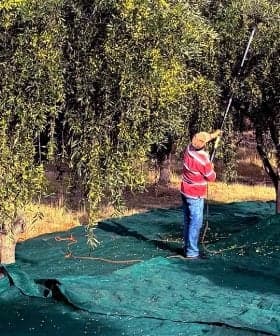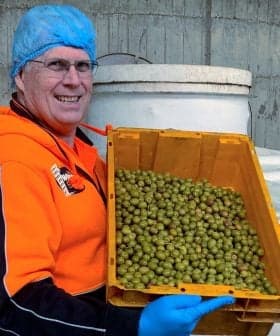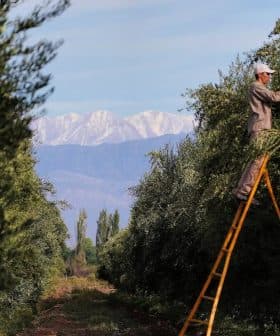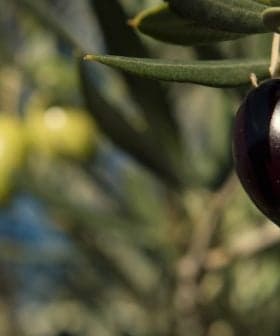Australia Charts Five-Year Course for Olive Oil Industry
The Australian Olive Industry Research, Development, and Extension Plan for 2010 – 2015 aims to address challenges such as drought, climate change, and market competition to sustain the industry’s growth. The plan focuses on objectives like market research, sustainability, climate change adaptation, and communication to ensure the industry’s development and competitiveness in the global market.
By Sarah Schwager
Olive Oil Times Contributor | Reporting from Buenos Aires
The Australian Government’s Rural Industries and Research Development Corporation has released its latest Australian Olive Industry Research, Development and Extension (RD&E) Plan for 2010 – 2015.
The plan sets out objectives to help protect and advance an industry that has grown rapidly in a short period of time, yet looks set to flatten if severe drought, climate change, consumer loyalty, export competition, marketing challenges and the international financial situation are not tackled.
 While olives have been a part of Australian culture since European settlement, the rebirth of the Australian olive industry began around 1995, according to the report, moving from a “cottage industry” entering its start-up phase to a technically sophisticated industry establishing Australia among the olive-growing nations.
While olives have been a part of Australian culture since European settlement, the rebirth of the Australian olive industry began around 1995, according to the report, moving from a “cottage industry” entering its start-up phase to a technically sophisticated industry establishing Australia among the olive-growing nations.
Last year’s olive oil production was estimated at 15,000 tonnes (up from 2,500 tonnes in 2004) and about 3,200 tonnes of table olives, for a combined retail value of more than AU$185 million (US$164 million). Expectations are that it will develop into a “mature” industry by the end of this decade.
Report co-author Ian Rowe says while the big producers – less than 20 located in north-central Victoria and in Western Australia north of Perth representing more than 70% of the country’s annual production – are becoming recognized for their efficient and modern production and processing methods, smaller producers are finding it difficult to compete in the supermarkets on price.
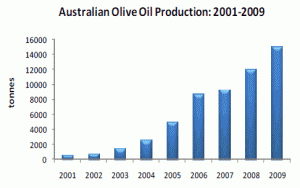 “Consumer confusion over what can be labeled as extra virgin olive oil doesn’t help either, particularly when the consumer is comparing a cheaper imported product against a locally produced product, both labeled extra virgin olive oil.”
“Consumer confusion over what can be labeled as extra virgin olive oil doesn’t help either, particularly when the consumer is comparing a cheaper imported product against a locally produced product, both labeled extra virgin olive oil.”
The Australian Olive Association (AOA) is currently tackling this issue with its Industry Code of Practice initiative.
Mr. Rowe, who is a founding member of the AOA and was President from 1998 to 2000, says the rapid growth of the industry is likely to level in the coming years.

- Click to open PDF

“New plantings have tapered off and on current indications, production will plateau towards the end of this decade,” he said. “Shortage of irrigation water, financial issues, including the Australian exchange rate, climate variability and the demise of Managed Investment Schemes are all factors contributing to the fall off in new plantings.”
The plan encompasses four objectives – Market Research and Product Development; Economically and Environmentally Sustainable Olive Industry; Dealing with Climate Change and Variability; and Communication, Co-ordination and Training – each of which has several strategies, which will each form the basis for a research project.
Priorities in the first objective address the buying intentions of olive oil consumers, consumer perceptions of the appropriate uses of olive oil and table olives, and attitudes to non-traditional retail packaging such as light gauge glass, plastics, “bag in box”, and small tins, as opposed to the heavy dark glass bottles traditionally used to package extra virgin olive oil, which are a heavy burden on the industry in terms of cost and on the industry’s environmental footprint.
AOA President Paul Miller says the strategies are definitely needed, with olive oil prices at historic lows around the world. “We are told this is because of the financial situations in the major producing countries – Spain, Greece, Portugal, and to some degree Italy – driving selling behaviour to generate cash flow,” he said. “This is making life difficult for everyone in the value chain except the retailers.”
The industry must also cope with Australia’s drought problems and climate change.
To reduce the effects of climate change and variability, the report says survival strategies are needed in the immediate future for groves affected by sudden weather extremes and, looking further, for those affected by long-term changes in weather patterns. Guidelines are also essential to minimize water use while maintaining oil yield and quality.
Mr. Rowe says while many of the large groves have access to good quality and long-term irrigation water – thanks to current government irrigation policies – a few may struggle. But he says some of the smaller groves, which are more geographically spread across the continent, are already feeling the effects of changes in temperature and rainfall patterns.
Mr. Miller, on the other hand, says olives are tougher than many other crops and the Government sees them as suitable for warmer dryer conditions in comparison with other traditional crops. “Despite challenges regarding water supply and climate variability Australia is not alone – Spain has had its challenges in recent years,” he said. “It is possible that some new players will enter the industry from Europe.”
Australia must also develop ways to compete with other new and rapidly expanding olive oil industries, from such places as Argentina, Chile and the United States, if it is going to secure the business of emerging olive oil consuming markets, such as China and India.
 Mr. Miller says the world market trusts Australian agriculture. The country is known for its high-quality extra virgin olive oil with low free fatty acidity (FFA). Sixty-two per cent of Australian olive oils have an FFA below 0.19%, according to 2003 – 2009 figures, while 94% have an FFA below 0.4%. This is well below the internationally recognized level for extra virgin olive oil of 0.8% and comparable with the 0.16% reported for small volume Tuscan producers.
Mr. Miller says the world market trusts Australian agriculture. The country is known for its high-quality extra virgin olive oil with low free fatty acidity (FFA). Sixty-two per cent of Australian olive oils have an FFA below 0.19%, according to 2003 – 2009 figures, while 94% have an FFA below 0.4%. This is well below the internationally recognized level for extra virgin olive oil of 0.8% and comparable with the 0.16% reported for small volume Tuscan producers.
Mr. Miller says the AOA is also aware of inquiries from European countries seeking to establish new plantations in Australia. “They say they are anticipating tougher conditions for the European Union after 2013 when they expect a significant reduction in subsidy for the olive industry,” he said.
He says there is also some preliminary activity from Asian companies. “There is currently more activity in China than India, and Australia has strong connections with these Asian market,” Mr. Miller noted.
The fourth objective encompasses providing producer education, improving industry cohesiveness and coordination, strengthening structures and coordination between industry bodies, developing a statutory levy funding process and a nationally accredited vocational training program, and the introduction of an Olive Industry Environmental Management Strategy.



